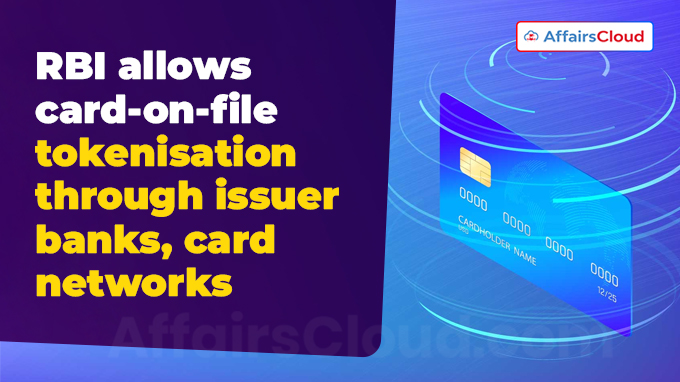 Reserve Bank of India (RBI) has released the report titled “State Finances: A Study of Budgets of 2023-2024”.
Reserve Bank of India (RBI) has released the report titled “State Finances: A Study of Budgets of 2023-2024”.
Key Findings:
i.As per the report, the Gross Fiscal Deficit (GFD) of states fell from 4.1% of GDP (Gross Domestic Product) (2020-21) to 2.8 %( 2022-23). This is below the State Budget Estimates for the 2nd consecutive year.
ii.States have budgeted a GFD to GDP ratio of 3.1% for FY (Financial Year) 2023-24. It is below the limit of 3.5% set by the Centre.
iii.The debt-GDP ratio of states declined from 31% at the end-March (2021) to 27.5% by end-March (2023).
iv.States have budgeted revenue expenditure for FY2023-24 at 14.4% of GDP, with social sector expenditure at 8% of GDP.
v.Committed Expenditure will remain same 4.5% of GDP.
- Commited Expenditure includes: interest payments, administrative services and pensions.
vi.The Report highlighted that debt consolidation remains priority, with states debt budgeted to ease 29.5% of the GDP (2022-23) as compared to 31.1% (2020-21). However, the number is higher than 20% recommended by the Fiscal Responsibility and Budget Management (FRBM) review committee in 2018.
vii.Report projected capital outlay will increase by 42.6%.
- Main reason for increase of capital outlay is increase in loan allocation under the scheme to special assistance to states for capital investment.
viii.Contingent liabilities of states which include government guarantees, decreased by around 16% during 2022-23. Earlier, it was 3.8 of GDP by end-March 2021.
ix.States dependence on net market borrowings declined to 76% in the budgeted GFD for 2023-24.
- Net market borrowings increased by 5.4%.
Reasons for decline in deficit:
i.The report mentioned that reduction in deficit was due to reduction in the revenue deficit while sustaining the robust capital outlays.
ii.However, outstanding liabilities will remain higher than 30% of gross state domestic product (GSDP) for many states. This is due to lower growth in revenue receipts and increase capital expenditure.
- Data of the report revealed that 19% states and Union Territories (UTs) set a GFD to GSDP ratio exceeding the fiscal responsibility legislation (FRL) of 3%.
RBI allows card-on-file tokenisation through issuer banks, card networks
RBI has allowed card-on-file tokenisation (CoFT) through issuer banks or institutions, card networks.
- It will provide cardholders a facility to tokenise their cards for multiple merchant sites (e-commerce sites) through a single process.
- Earlier, RBI had announced to extend this tokenisation service to issuer banks and financial institutions as part of the Statement on Development and Regulatory Policies in October, 2023.
Features:
i.Generation of CoFT tokens: Tokens can be generated through the card issuer or card networks, customers can enable them through mobile banking and internet banking channels.
ii.It is mandatory for card issuers to provide a complete list of merchants for whom they can provide tokenisation services and cardholders will select the merchants as per their choice and convenience.
iii.After the generation of tokens, they are needed to be made available on the merchant’s payment page, in the cardholder ‘s account with the merchant.
iv.Tokenisation guidelines are applicable for both debit and credit card.
v.Tokenisation is available only for domestic transactions.
About CoFT(Card-on-File Tokenisation):
- It was introduced by RBI in September 2021 and it started its operation on October1,2022.
- As per the RBI, Over 56 crore token have been created on which transactions with value of over 5 lakh crore have been undertaken.
Tokenisation: refers to replacement of actual card detail in an encrypted form with alternate code named “token” which can be used for online purchase. It consists of unique combination of card, token requestor and the merchant.
RBI’s model pegged India’s FY25 GDP growth at 6.0%
RBI developed Dynamic Stochastic General Equilbrium(DSGE) model has projected GDP growth for India at 6.0% for FY25(2024-25).
- This projection is 50 basis points lower than RBI’s Monetary Policy (Ocotber,2023), which has forecasted India’s GDP at 6.5% for FY25.
RBI’s model projects FY25 retail inflation at 4.8%
RBI’s Dynamic Stochastic General Equilibrium(DSGE) model has projected retail inflation for India will be moderated at 4.8% for FY2025.
Projection’s regarding CPI inflation:
- It has estimated CPI inflation for FY24 (2023-24) will be 5.4%, Quater3 (Q3) at 5.6% and Q4 at 5.2%.
- Subsequently, DSGE model projected CPI inflation for Q1 (FY25) will be 5.2% followed by Q2 and Q3 of FY25 (2024-25) will be 4.0% and 5.2% respectively.
Other Major Assumptions made by DSGE model:
i.Global Growth rate will be 2.6%(2023-24) and 2.1%(2024-25).
ii.Global CPI inflation for FY24 and FY25 will 5.5% and 4.0% respectively.
iii.Repo Rate will remain 6.5% for FY24 and FY25.
iv.It estimated that growth rate for India will be 7.1%(2023-24) which is 10 basis higher than official forecast of RBI which is 7.0%
About Dynamic Stochastic General Equilibrium(DSGE) Model:
- RBI introduced this model during COVID-19 time, to assess the impact of COVID-19 on Indian economy.
- DSGE model is a method in macro economics that attempts to explain economic phenomena such as economic growth and business cycles through ecometric models based on economic principles and applied general equilibrium.
- RBI has considered three main economic parameters: households, firms and governments.
CPI(Consumer Price Index):
It measures the change in prices of basket of goods and services(such as food, education, healthcare etc.) purchased by Indian consumers. It is released by National Statistical Office(NSO).
RBI tightens norms to check evrgreening of loans by lenders through AIFs
RBI has introduced new norms in order to curb “evergreening” of loans by lenders through Alternate Investment Funds(AIFs).
About Evergreening of Loans: It is a practice of extending new loans to borrowers who is unable to repay previous loans. Thus, borrowers conceals the true status of bad loans or NPAs(Non-Performing Assets).
Key Points:
i.It has put restrictions on banks and NBFCs(Non-Banking Finance Companies) from investing in any scheme of Alternative Investment Funds(AIFs) which has made any investment in companies that have taken loan from the concerned lenders in past 1year(12months).
ii.It has directed lenders that such investments would be required to be liquidated within 30 days.
iii.If the Regulated Entities(REs) is unable to liquidate its investment within the stipulated time, they will be required to make 100% provisions on these investments.
iv.Investment by RE in the subordinated units of any AIFs with a “priority distribution model” shall be subject to full deduction from banks, NBFC’s capital funds.
Regulated Entities(RE): refers to financial institutions or organizations that operate within the framework of specific regulations set by RBI. Some of the Regulated Entities in India are: Commercial Banks, Urban Co-operative Banks, NBFCs, all-India financial institutions
About Alternative Investment Fund (AIF):
It is a special fund established to raise privately pooled investment vehicle from private entities whether Indian or foreign to invest in accordance with a defined investment policy for the benefit of its investors. These funds do not draw investment in the form of Cash or Bonds or Capital Stocks. AIFs are regulated by SEBI under SEBI (Alternative Investment Fund) Regulation, 2012.
About Reserve Bank of India(RBI):
Established: 1 April, 1935
Headquarter: Mumbai, Maharashtra
Governor: Shaktikanta Das(25th Governor of RBI)




